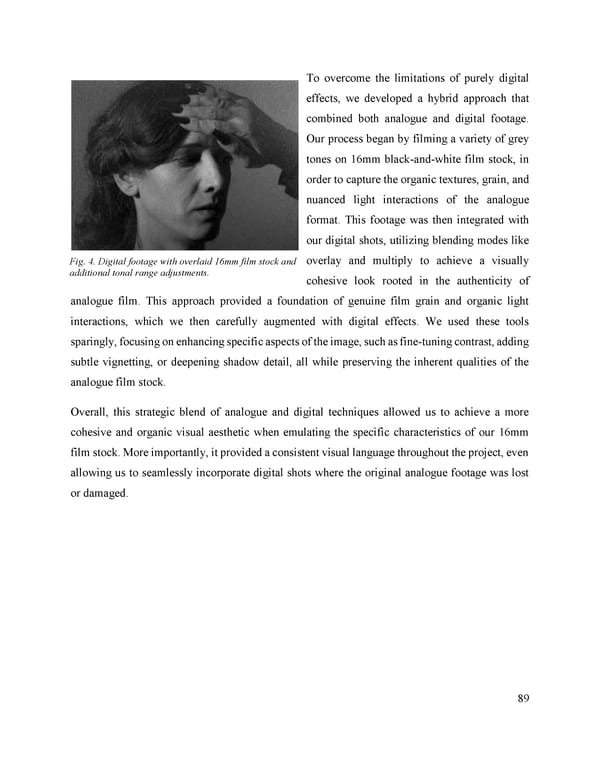To overcome the limitations of purely digital effects, we developed a hybrid approach that combined both analogue and digital footage. Our process began by filming a variety of grey tones on 16mm black-and-white film stock, in order to capture the organic textures, grain, and nuanced light interactions of the analogue format. This footage was then integrated with our digital shots, utilizing blending modes like overlay and multiply to achieve a visually Fig. 4. Digital footage with overlaid 16mm film stock and additional tonal range adjustments. cohesive look rooted in the authenticity of analogue film. This approach provided a foundation of genuine film grain and organic light interactions, which we then carefully augmented with digital effects. We used these tools sparingly, focusing on enhancing specific aspects of the image, such as fine-tuning contrast, adding subtle vignetting, or deepening shadow detail, all while preserving the inherent qualities of the analogue film stock. Overall, this strategic blend of analogue and digital techniques allowed us to achieve a more cohesive and organic visual aesthetic when emulating the specific characteristics of our 16mm film stock. More importantly, it provided a consistent visual language throughout the project, even allowing us to seamlessly incorporate digital shots where the original analogue footage was lost or damaged. 89
 Lost Analogue: Exploring Film, Music, and Interdisciplinary Methods in Education Page 89 Page 91
Lost Analogue: Exploring Film, Music, and Interdisciplinary Methods in Education Page 89 Page 91